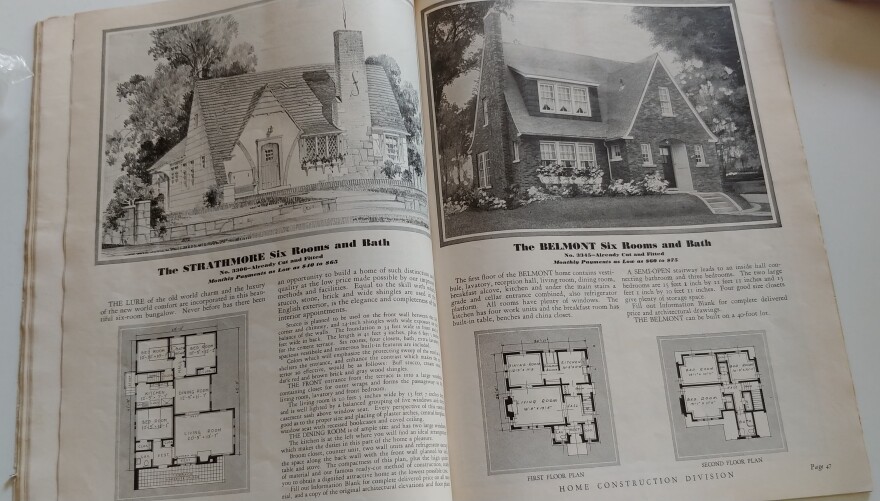Our OKI Wanna Know series tries to answer your questions about the Cincinnati area. This week, WVXU's Bill Rinehart looks at build-it-yourself homes and the impact they had on the region.
Lorinda Niemi of Fairfax wants to know about Sears kit homes and which neighborhoods have them.
Cindy Catanzaro of Springfield, Ohio lived in a Sears kit home. Her daughter accidentally uncovered the home's history while playing the online game, The Sims.
"She was on the internet looking for small houses to build for her Sims and she ended up on the Sears and Roebuck website. They have an archives there. They had a lot of information about the Sears modern homes, and they had little illustrations. She's looking through the houses, and she's like 'Oh, there's a cute little house' and she's like, 'Oh wait. That's my mom's house.' "
Catanzaro says that discovery inspired her to research her home's history. That expanded into looking for more. She bought a vintage Sears, Roebuck and Co. catalog online, and realized the house across the street and another around the corner were also kit homes.
"Once I found all the ones in Springfield and Clark County, I started branching out to other counties locally and eventually found out that Cincinnati has this huge pocket," she says.
In 1908, Sears, Roebuck and Co. started selling house blueprints, followed soon after by the building materials for those specific plans, too.
"Before 1916 it was still just raw lumber in lengths and you had to cut it on site and build it," Catanzaro says. "But then after 1916 it got really manufactured. That lumber itself was manufactured ready to build your house. It became quite a thing and their sales took off."

She says from 1908 to 1942, Sears sold more than 70,000 kits nationwide, and more than 3,000 in the Cincinnati area. There's a reason for that. Sears bought a large millwork plant, Norwood Sash and Door.
"By 1916 they were even advertising that you could get your house delivered locally for free. Everybody else in the United States had to pay freight - train freight - to get their house kit. But if you were in Cincinnati you could get it delivered for free," Catanzaro says.
She's one of a few researchers who hunt for the kit homes. They've identified close to 14,000 nationwide so far, and Cincinnati is number one on the list. Catanzaro says they have identified 1,221 in and around Cincinnati.
"They're in all the neighborhoods, all the suburbs, all the enclaves, all the townships. They're basically everywhere down there," Catanzaro says. "We know of about 30 that have been demolished. We're losing a few."
She says they're still finding some, too. She confirmed one just last month. It's not only Cincinnati. Catanzaro has documented about 200 kit homes in Northern Kentucky, along with others in Hamilton, Fairfield, Oxford, Richmond, Milford, Batavia, and across Montgomery County. They're listed on her blog.
There's one local Sears kit home that's open to the public. It's the Miller House, and it's home to the Madeira Historical Society. Librarian and Archivist Carol Heck says a lot of people visit to learn about Madeira history, and some just to learn about the house itself.
"It's the Crescent model. It was built by Howard DeMar. The first owners were the Fourniers. He was a chemist at P&G."
Eventually, the house was purchased by the Miller family and donated to the historical society. Board member Doug Oppenheimer says Elizabeth Miller had a great affection for her home.
"She loved her Sears house. In fact ... what most (visitors) are really surprised about is how much of what would have been the original house is still the original."
The Miller House is open to visitors twice a month, April through December.




